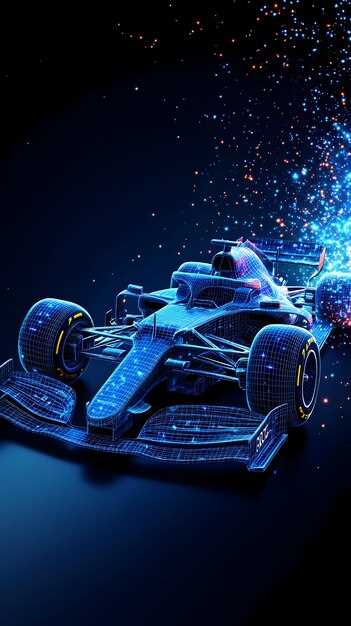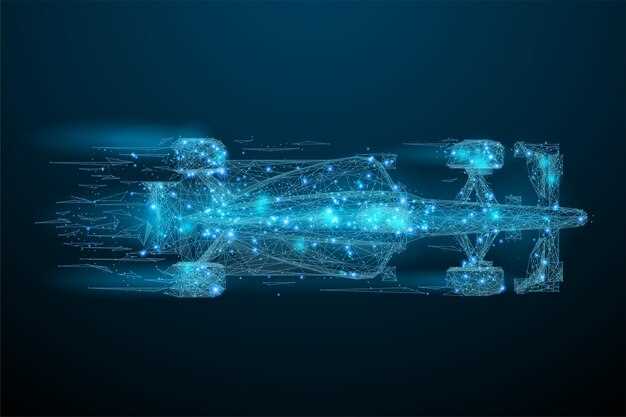
The world of motorsports is constantly evolving, driven by a relentless pursuit of performance and efficiency. Among the most significant advancements in this field is the development of sophisticated data acquisition systems. These logging technologies have transformed the way race teams gather and analyze critical information, enabling them to make informed decisions that can enhance their competitive edge.
At the core of these innovations lies the ability to collect vast amounts of data from various sensors strategically placed throughout the vehicle. This data includes everything from tire pressure and temperature to engine performance and aerodynamic characteristics. By harnessing this information, teams can gain invaluable insights into the car’s behavior on the track, facilitating real-time adjustments and long-term strategic planning.
Recent advancements in data acquisition technology are not only improving the precision of logging processes but are also making it more accessible to teams of all sizes. With the integration of wireless communication systems and cloud-based analytics platforms, teams can now analyze their performance data more efficiently, allowing for quicker decision-making during races and better preparation for future events. These innovations continue to push the boundaries of what is possible in racing, ultimately leading to faster cars and more exciting competitions.
Real-Time Data Logging Systems for Enhanced Performance Monitoring

In modern motorsport, real-time data logging systems have become essential tools for optimizing race car performance. These systems utilize a network of advanced sensors strategically placed throughout the vehicle to collect critical information during races and practice sessions.
Data acquired from these sensors includes parameters such as tire temperature, engine RPM, throttle position, and aerodynamic forces. This information is transmitted to a central processing unit, where it is analyzed in real-time. The rapid processing of data allows teams to make immediate adjustments to the vehicle setup, enhancing performance and competitiveness on the track.
Moreover, real-time data logging enables engineers to detect potential issues before they escalate into significant problems. By monitoring key performance indicators, teams can identify patterns and trends, leading to proactive maintenance strategies. For example, signs of tire degradation can be assessed instantly, allowing for timely pit stops that prevent performance loss.
Additionally, the integration of telematics in data logging systems permits team members to monitor the vehicle’s performance remotely. This capability is particularly valuable during testing sessions, as engineers can communicate with drivers about necessary adjustments without interruption. The ability to analyze data live fosters a collaborative environment, enhancing decision-making processes and driving competitive advantages.
In summary, real-time data logging systems revolutionize race car performance monitoring through sophisticated sensors and instantaneous data analysis. By harnessing this technology, teams gain invaluable insights, which ultimately translate into increased efficiency, enhanced race strategies, and improved overall race outcomes.
Advanced Sensor Technologies and Their Impact on Racing Strategies

In the competitive world of motorsport, advanced sensor technologies have revolutionized data acquisition and logging, providing teams with invaluable insights to enhance their racing strategies. These sophisticated sensors collect a wide array of data, including telemetry on speed, engine performance, tire temperature, and aerodynamic efficiency.
One of the most significant advancements in sensor technology is the integration of multiple data sources into a cohesive logging system. This system enables teams to analyze real-time information during a race, allowing for quick adjustments based on dynamic track conditions. For instance, tire pressure sensors can trigger instant modifications to pit stop strategies or driving techniques, optimizing performance and gaining crucial seconds on competitors.
Moreover, data analytics tools powered by AI and machine learning are increasingly being utilized to process the vast amounts of data collected by these sensors. By analyzing historical data alongside real-time inputs, teams can predict optimal race strategies, including pit stop timing and fuel management. Such predictive capabilities not only enhance decision-making but also reduce human error that can arise under pressure.
Furthermore, the miniaturization of sensor hardware has played a pivotal role in providing more accurate and reliable data logging capabilities. Lightweight sensors can now be placed in various locations throughout the vehicle, facilitating a more thorough understanding of performance metrics. This comprehensive data enables engineers to fine-tune setups that maximize a vehicle’s potential on specific circuits, taking into account factors like weather and surface variations.
The impact of these technologies extends beyond immediate race day strategies; they also inform longer-term vehicle development. Insights gained from data analysis help teams adapt their designs to improve future performance, ensuring they remain competitive in an ever-evolving motorsport landscape. In summary, the implementation of advanced sensor technologies has become essential in shaping effective racing strategies, providing teams with a critical edge in the high-stakes environment of professional racing.
Integrating Telemetry with Data Analysis for Immediate Feedback
In the realm of race car engineering, the integration of telemetry systems with data analysis tools has revolutionized the way teams assess performance on the track. Telemetry encompasses the collection of data from various sensors placed throughout the vehicle, enabling real-time monitoring of critical parameters such as speed, acceleration, tire pressure, and engine temperature. By logging this data during practice sessions and races, engineers can generate a comprehensive view of the car’s behavior under different conditions.
The real power of telemetry emerges when it is combined with advanced data analysis techniques. As sensors continuously transmit data, sophisticated algorithms can process this information instantly, providing teams with immediate feedback. For instance, if tire degradation is detected through changes in grip levels logged by tire temperature sensors, engineers can promptly adjust tire strategies or make necessary alterations to the car’s setup.
This immediate feedback loop allows teams to react swiftly to performance issues, enhancing their competitive edge. Data analysis platforms can visualize logged telemetry data, enabling engineers to make informed decisions at critical moments. By correlating variables, such as engine RPM with lap times, teams can better understand the car’s dynamics and optimize performance on the fly.
Moreover, integrating telemetry with data analysis fosters a culture of continuous improvement. Teams can identify patterns over multiple races, assessing the impact of various tuning adjustments and environmental factors. This long-term data logging contributes to a deeper understanding of performance trends, allowing for strategic planning in future races.
In conclusion, the integration of telemetry systems with robust data analysis capabilities is essential for modern motorsports. The synergy between real-time data logging and analytical insights equips teams with the tools necessary to fine-tune performance, respond to immediate challenges, and maintain a competitive advantage on the racetrack.



